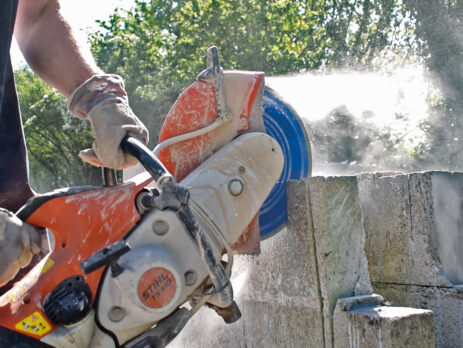Redressing a Mexco Diamond Blade
An issue raised from time to time is that a diamond blade can slow in cutting speed or stop cutting altogether. As a diamond blade can be an expensive consumable purchase, it is imperative to maximise on the cutting life and the speed of cut.
TECHNIQUE
A diamond blade can decrease in cutting speed or stop cutting as a result of the segment bond encasing the diamond failing to wear at a fast-enough rate to expose a new layer of sharp diamond grit. When a sharp layer of diamond grit is not exposed the user can experience slower than expected cutting of the application.
To restore the full capabilities of a diamond segment, a new layer of diamond grit is required. This can be easily achieved by running the segment through a material that abrades the surrounding metal bond whilst leaving the sharp diamond grit exposed.
For a quick and effective opening or redressing of a segment we recommend using a dressing stone or rubbing stone. These are a moderately thick, narrow bar of stone with a specific level of abrasion and hardness. Alternatively, a fire brick can also be used for this purpose as they contain approximately 90% silicon carbide. If the previously mentioned materials are not available, the user can make passing cuts into a low-density concrete block or a piece of abrasive sandstone, these can act as an effective makeshift dressing stone.
THE PROCESS OF SHARPENING A DIAMOND BLADE
First, make sure the blade is spinning in the correct direction. You can do this by ensuring the arrow on the blade is rotating in the same direction as the machine is designed to spin.
Please note: A diamond blade that is not mounted in the correct rotational direction will experience poor cutting characteristics.
- Before you begin, check that there is a visible segment of over 2mm remaining, in many cases the last 1-2mm of a diamond blade segment cannot be redressed, this area is named free back and forms part of the segment attachment process that does not contain diamond grit.
- When you have chosen and adequately secured the correct redressing material, start by making gentle 300mm cutting passes in the material deep enough to cover the diamond segment.
- The number of redressing passes can vary but as a general rule it should not exceed ten passes.


